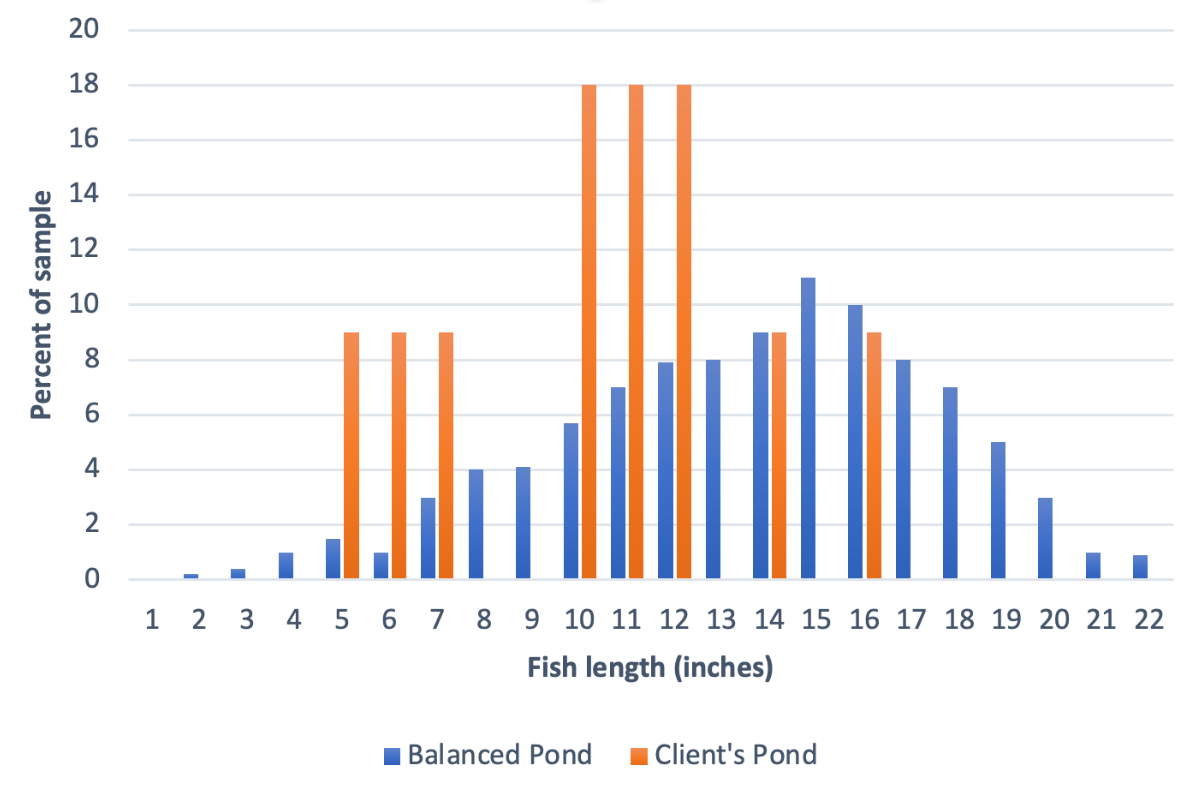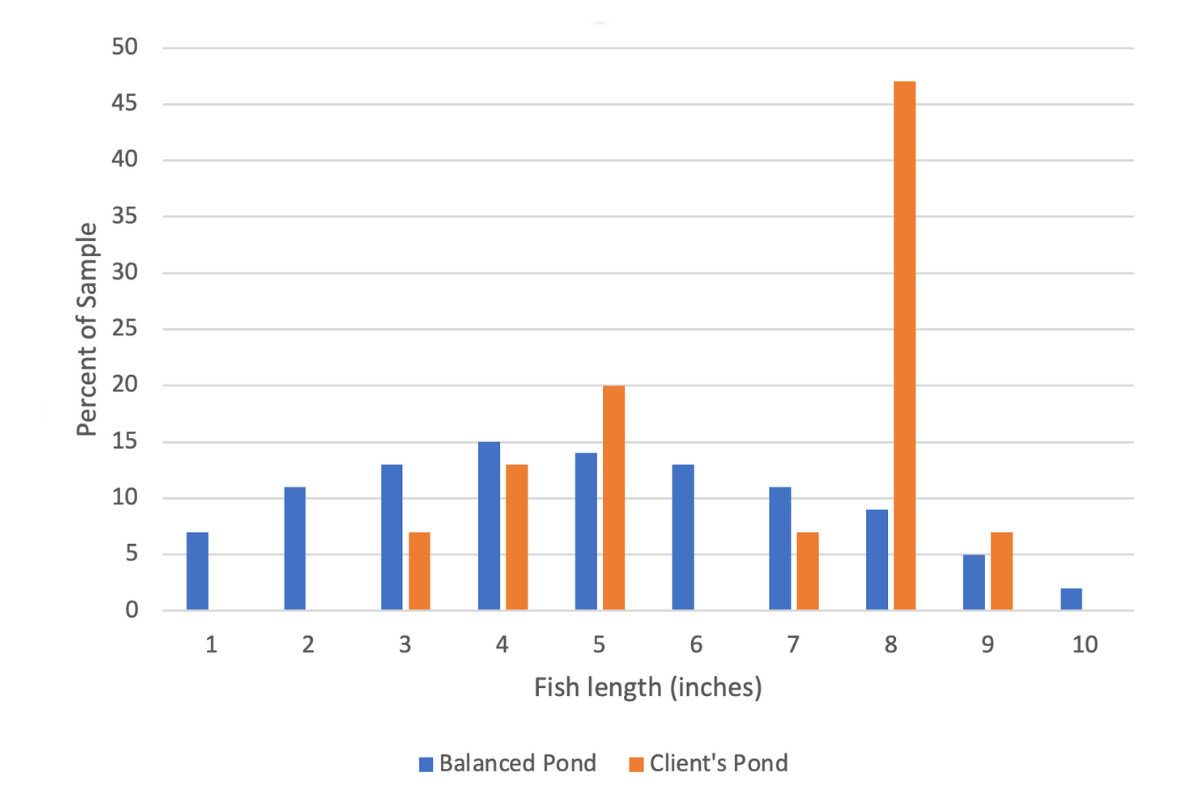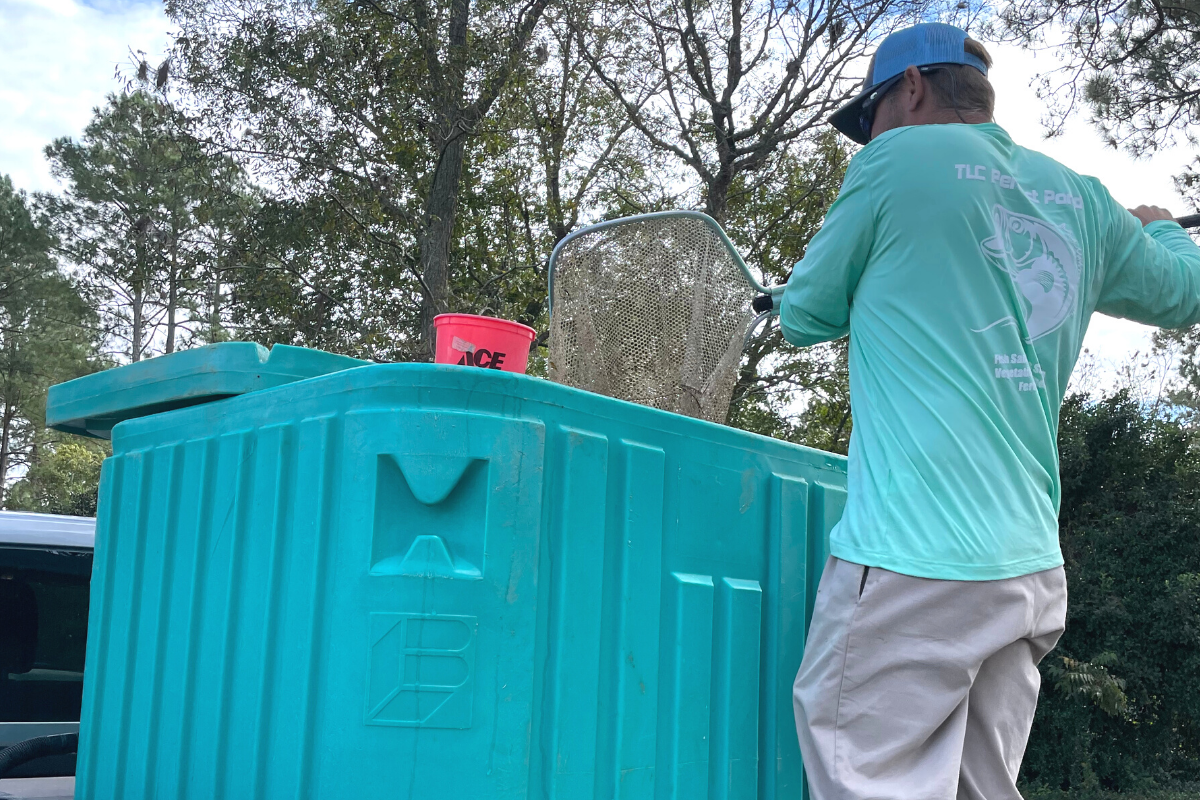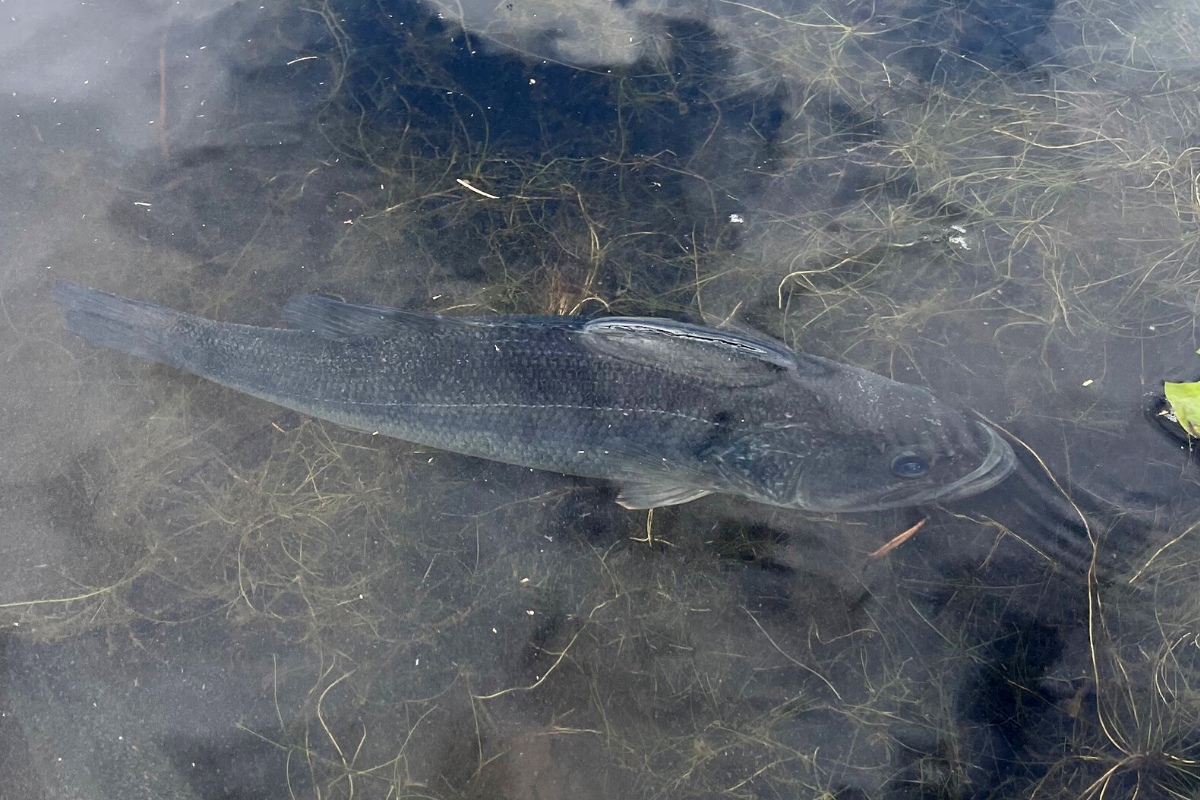Stocking hybrid bass and bluegill in a pond is a great way to improve the long-term success of a fishery, but it should not be done without some form of baseline population analysis. This is why we always recommend a population sampling via electrofishing prior to any stocking efforts. A proper sampling of the population will provide insights into the distribution of predators and prey, so that the correct numbers of each species can be added and the populations can be adjusted properly.
Recently, we stocked a 20 acre pond that had some heavily unbalanced populations of largemouth bass and bluegill. Prior to stocking, we performed an electrofishing sample to get a baseline for the population dynamics. We measured each largemouth bass and bluegill that was caught and graphed the distribution of each length slot in inches.
Ideally, we like to see a bell curve when graphing the distribution of fish sizes in a given pond. For example, a balanced pond will have a significant amount of bass in the 10″-18″ range with even proportions of small and larger fish on either side of the curve (as indicated by the blue bars on the figure below). In this particular pond, there were significantly more smaller bass and very few fish in the larger length slots. This tells us that the population is far from balanced and helps us develop hypotheses as to why the bass are underperforming.
Largemouth Bass Population Dynamics

In addition to the bass population being unbalanced, the bluegill population was also not balanced. As indicated by the figure below, there were significantly more bluegill in the 8″ length slot than any other length slot. There were also low numbers of smaller bluegill, indicating that the prey population numbers in general were not sufficient.
Bluegill Population Dynamics

Unbalanced populations of largemouth bass like we saw in this pond are usually a result of low prey numbers and/or low prey availability. In this pond we were dealing with both. When we sampled this pond, we noticed a significant amount of submerged vegetation. High levels of underwater vegetation can make it difficult for largemouth bass to hunt and capture food (bluegill). They spend just as much energy hunting as they obtain from the food they eventually eat. As a result, their growth is minimal.
After the initial sampling, we sprayed the pond to eliminate most of the submerged vegetation. We also stocked triploid grass carp to help keep that vegetation under control over time. When we visited the pond several months after spraying and introducing the carp, we noticed a significant decline in the submerged vegetation, which should drastically increase the long-term prey availability.
Now that the prey availability portion was solved, we had to address the overall lack of prey (bluegill) for the bass. Using the population numbers obtained from the electrofishing sampling, we stocked the pond with reproductively-mature bluegill that averaged 0.5 lbs each. These fish will spawn the following spring and several more times within the year. This allows them to make an immediate contribution to the pond, increasing the amount of forage for the largemouth bass.

Precautions When Stocking Hybrid Bass
We always recommend allowing the bluegill to establish themselves before stocking hybrid bass. We typically recommend 6 months to a year between bluegill and bass stocking, but that decision is ultimately at the discretion of the pond owner. If the stocked bluegill are allowed to spawn prior to stocking hybrid bass, they will have a much larger impact on the long-term pond dynamics.
The largemouth bass we stock is a genetically-superior strain that grows faster and is more aggressive, meaning it will bite a lure when other fish won’t typically bite. These fish can easily grow 2 lbs or more a year if bluegill populations are abundant and accessible to the fish. That’s the caveat with these hybrid bass — you have to have the forage present, otherwise they won’t grow like they should. Once introduced into a pond, the hybrid bass will breed with the existing bass populations and improve the overall genetics of the fishery.
Our hybrid largemouth bass are typically between 8-12″ in length and weigh 0.5-0.75 lbs each. Stocking a bigger fish not only improves their chances of survival, but it also means they’re ready to spawn. If a pond has an existing bass population and it is stocked with tiny, fingering bass, the existing bass will eat them quickly and negate your stocking efforts. The fish we stock are large enough so that they won’t get eaten by the existing bass populations.
Our stress-free stocking process ensures that the fish are well-acclimated to their new environment. We start by mildly sedating the fish in the holding tank. This ensures that the fish won’t injure themselves and other fish while being transferred to the pond via a net. After sedating in the holding tank, we drain half the water in the tank and replace it with water from the pond. This helps the fish become acclimated to the temperature in their new environment. After 20-30 minutes in the holding tank, we slowly introduce the fish into the pond.

After the fish are introduced to their new environment, we keep a close eye on them to make sure they all are swimming well. The effects of the sedative are usually gone shortly after introduction, and they’re ready to explore their new surroundings. Because these fish are larger, they’re ready to spawn and quickly improve the overall quality of this fishery.
If you’d like to see the footage of us stocking hybrid bass in this pond, you can click the video below. Please subscribe to our YouTube channel and click the bell notification button so that you’re notified each time we post a new video.

